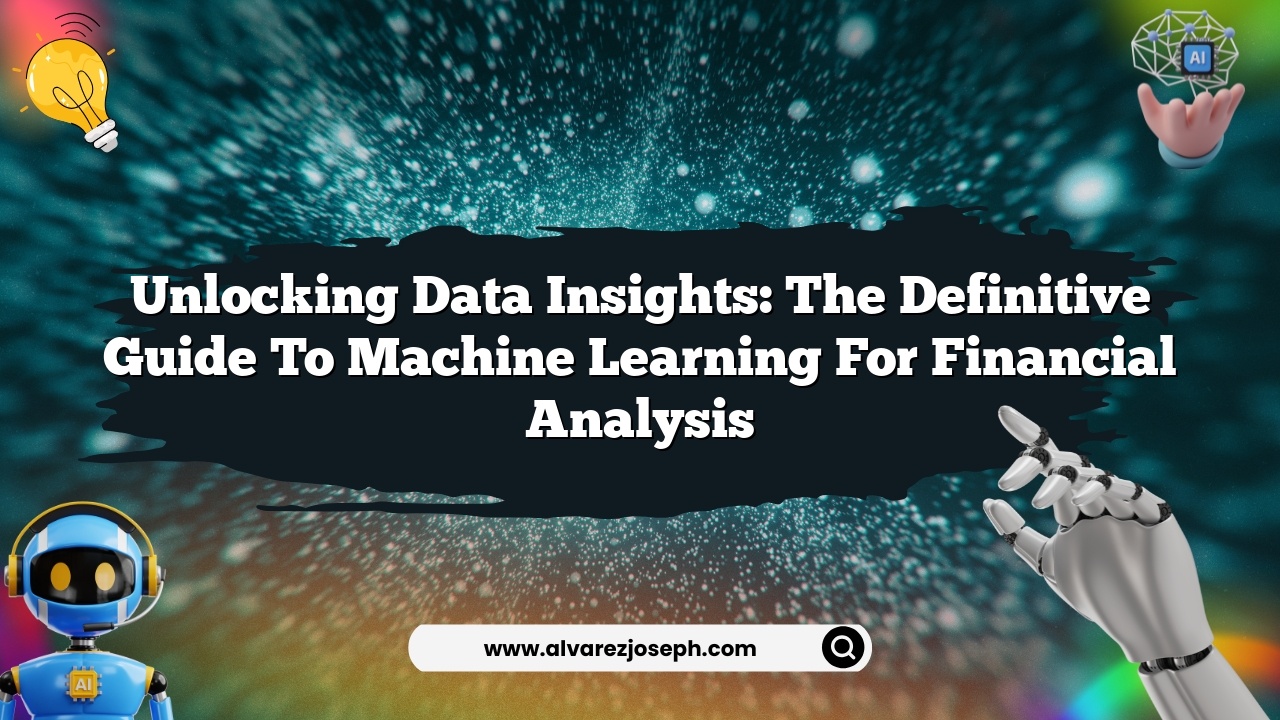In the bustling world of finance, where every second counts and every decision can spell fortune or fiasco, a new hero has emerged: machine learning. It’s like having a superpower at your fingertips, ready to transform streams of numbers into actionable insights. But wait, isn’t machine learning just for tech geeks? Not anymore! Let’s dive into this fascinating world, where numbers tell stories and algorithms become your financial advisors.
The Magic of Machine Learning in Finance
Picture this: a world where financial decisions aren’t just shots in the dark but are informed by mountains of data crunched by algorithms in the blink of an eye. Welcome to the era of machine learning in finance! From predicting stock trends to detecting fraud, machine learning is revolutionizing how we see data. But how does it work its magic?
At its core, machine learning is about teaching computers to learn from data patterns, much like teaching your dog to fetch. This isn’t just a trend; it’s a game-changer, inviting us to rethink assumptions and redefine possibilities in financial analysis.
How Machine Learning Transforms Financial Analysis
Imagine walking into a library with books thrown about haphazardly. Daunting, right? Now, imagine if each book magically sorted itself into its rightful place the moment you thought about it. That’s what machine learning does with data. It organizes, analyzes, and extracts patterns that are invisible to the naked eye, revealing insights that can turn the financial tide.
- Predictive Analytics: By analyzing historical data, machine learning models can forecast future trends, helping investors make informed decisions.
- Risk Management: Algorithms can evaluate risks by identifying patterns that signal potential pitfalls or opportunities.
- Fraud Detection: Machine learning can uncover anomalies that indicate fraudulent activities, protecting assets and integrity.
Getting Started with Machine Learning in Finance: What You Need to Know
Feeling like you need a PhD to understand machine learning? Fear not! Here’s a crash course:
- Data Collection: Just like a sculptor needs clay, machine learning needs data. The more quality data, the better the models.
- Data Cleaning: Think of this as pruning a tree. You remove the noise to let the useful insights flourish.
- Model Selection: Choosing the right algorithm is like choosing the right tool for a job. Options abound, from decision trees to neural networks.
- Training and Testing: Models learn by example, improving as they go through more data.
- Evaluation: This is where you see if your model is the next Einstein or needs a bit more tutoring.
Real-World Applications of Machine Learning in Finance
Machine learning isn’t just a theoretical marvel; it’s a practical powerhouse. Here’s how it’s making waves in the financial sector:
- Algorithmic Trading: High-frequency trading uses algorithms that make split-second decisions, capitalizing on market movements faster than any human could.
- Credit Scoring: By analyzing various data points, machine learning models can predict creditworthiness, offering fairer assessments.
- Sentiment Analysis: By scanning news articles and social media, algorithms gauge market sentiment, providing insights into investor behavior.
The Challenges of Implementing Machine Learning in Financial Analysis
Sounds too good to be true, right? Well, there are challenges too. Implementing machine learning in finance isn’t always a walk in the park:
- Data Privacy: Handling sensitive financial data requires stringent privacy measures.
- Model Interpretability: Sometimes, algorithms work in mysterious ways, making it hard to understand their decision-making process.
- Regulatory Compliance: Financial markets are heavily regulated, and ensuring compliance while using sophisticated algorithms can be tricky.
How to Overcome Common Machine Learning Challenges in Finance
Challenges, however, are meant to be overcome. Here’s how the industry tackles them:
- Robust Data Security Measures: Encryption and anonymization help protect data privacy.
- Transparent Models: Using simpler models when possible makes it easier to interpret and explain decisions.
- Collaborative Approaches: Engaging with regulators early ensures smoother compliance with policies and guidelines.
The Future of Machine Learning in Finance: What’s Next?
Machine learning is on the brink of becoming not just a tool but a foundational element of financial analysis. Imagine algorithms that not only predict but also explain their reasoning, making financial insights more transparent and actionable. Quantum computing might further revolutionize this field, enhancing our ability to process data at unprecedented speeds.
Quick Summary
- Machine Learning is transforming financial analysis by offering data-driven insights.
- Predictive Analytics and Risk Management are key applications, providing foresight and security.
- Challenges such as data privacy and regulatory compliance exist but are surmountable.
- Future Trends include more transparent models and potential integration with quantum computing.
Frequently Asked Questions
What is machine learning in finance?
Machine learning in finance involves using algorithms to analyze data and make informed financial decisions, such as predicting market trends or managing risks.
How does machine learning help in risk management?
Machine learning helps by identifying patterns and anomalies that indicate potential risks, allowing for proactive measures to mitigate them.
Can machine learning predict the stock market accurately?
While it can’t predict with 100% accuracy, machine learning models can identify trends and indicators that guide investment strategies.
What are the challenges of implementing machine learning in finance?
Challenges include ensuring data privacy, model interpretability, and compliance with financial regulations.
How is machine learning used in fraud detection?
Machine learning algorithms detect unusual patterns or behaviors that may indicate fraudulent activities, providing early warnings.
What is the future of machine learning in financial analysis?
The future includes more transparent and interpretable models, possibly enhanced by quantum computing, offering deeper insights into financial data.
Remember, the journey into machine learning for financial analysis is not just about algorithms; it’s about transforming how we see and use data. So, ready to dive deeper? Keep exploring, because this is just the beginning!












